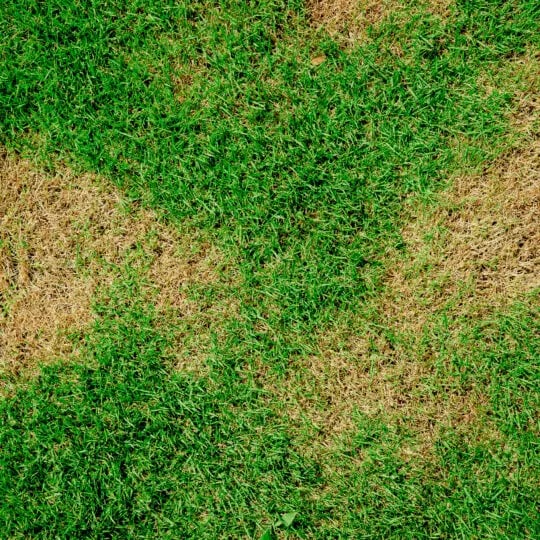What Are Those Yellow Spots in My Grass?

Few things ruin the joys of a luscious, green lawn than discolored, yellow spots in your grass. Unfortunately, the cause of these unsightly areas isn’t always obvious. Learn the main causes of yellow spots and how you can identify what you’re dealing with.
Causes of Yellow Spots in Your Grass
Drought
Appearance: Yellow spots caused by drought will often cover many areas of the lawn. There might be minimal variation due to areas of your lawn that drain differently than others.
Cause: In Pennsylvania, Delaware, and New Jersey, we often get enough rain to prevent a drought. After a week or two without significant rain, your lawn might be at risk.
Prevention: During Pennsylvania’s hot summers, you want the moisture level of your grass to be in the range of 8 to 10 inches. To determine the moisture level, use a probe to penetrate the soil to the desired depth. If the ground isn’t easily penetrated, it is probably a sign that your soil needs more moisture. A long soaking once or twice a week is more effective than short use of the sprinkler every day.
Stress
Appearance: Does there seem to be little consistency to where discolored spots are appearing in your yard? The cause might be yard stress.
Cause: Stress can be caused by many things, like frequent paths traveled by people and animals, heavy items left for too long in one spot, and animal urination.
Prevention: Don’t always take the short path to your favorite spot in the yard! If you vary your route, you can prevent the yellow spots caused by too much use. Be sure to rotate picnic tables often, and keep your yard tidy from heavy items like tires. Unfortunately, pet urination is hard to handle, so consider training your dog to just use one area.
Pythium Blight
Appearance: Pythium blight appears as dark patches of grass ½ an inch to 4 inches in diameter. When wet, it is greasy-looking and grayish (cotton-colored). However, when it dries, it becomes a yellowish color, sometimes growing together to form long streaks and often following the path of water drainage on the lawn.
Cause: Pythium blight’s fungal spores can be easily transported by wind, water and by mowing the lawn. For this reason, they are often found growing in lines that follow indents in the lawn where water drainage occurs, or the mowing pattern on the lawn.
Prevention: Overfertilization and overwatering can often be blamed for the appearance of Pythium blight. Pythium thrives in densely growing, lush grass, and prefers the permanently damp conditions provided by lawns whose soil drains poorly.
Get Rid of Yellow Spots in Your Grass with Green Lawn Fertilizing.
The lawn care experts at Green Lawn Fertilizing know just how to take care of your yard so it’s the greenest on the block. Call us today at 855-469-0692 to get a free quote for our comprehensive Green Lawn Program.